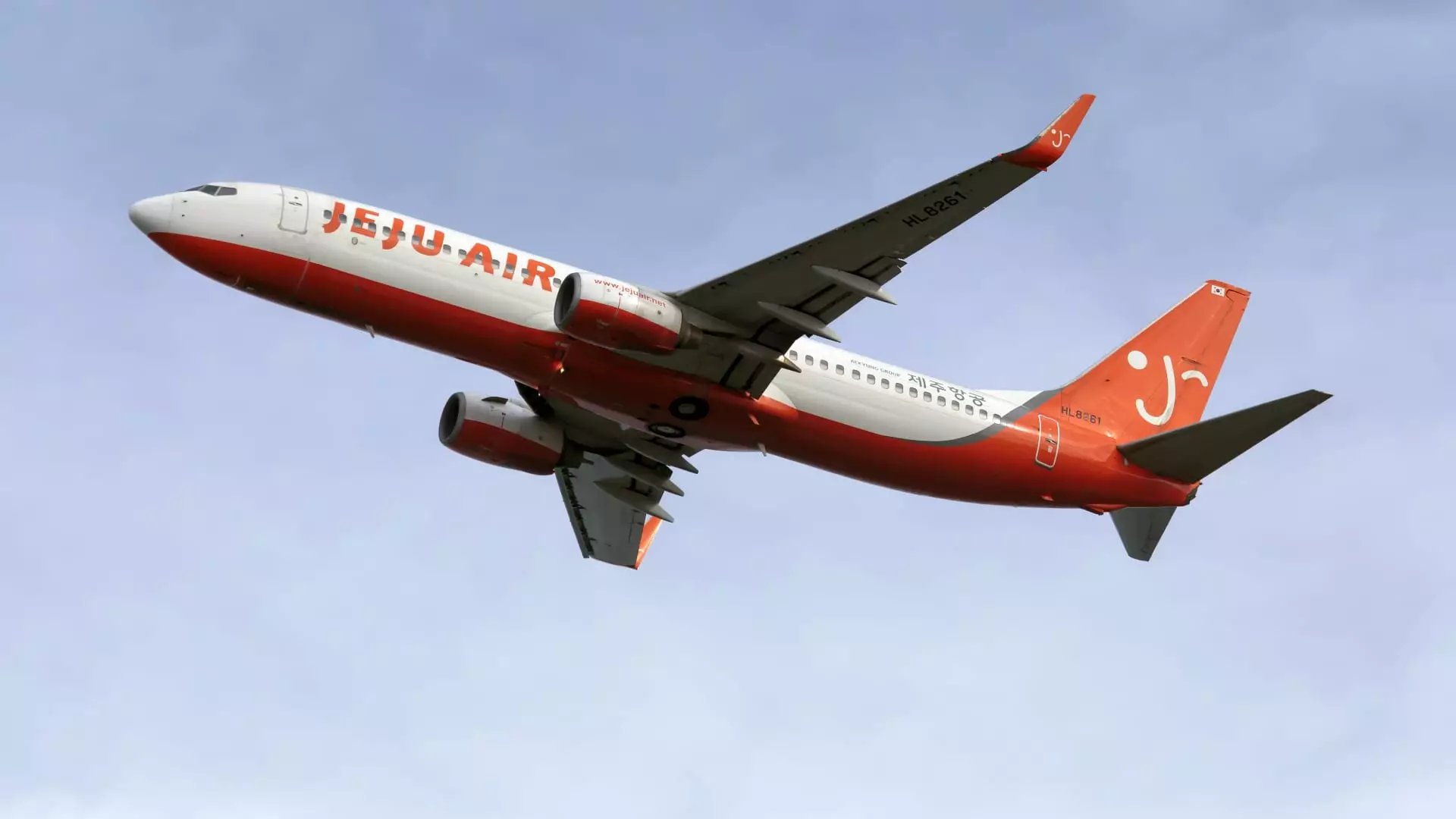In a harrowing turn of events at Muan International Airport in South Korea, a Jeju Air flight experienced a catastrophic incident that resulted in the tragic loss of lives. The flight, designated as 7C2216, was involved in a belly landing without its landing gear deployed, leading to a fiery inferno that claimed the lives of 179 individuals on board, leaving only two survivors. This disaster marks one of the gravest aviation tragedies in the region in recent years, and the question looms large: how could this flight end so tragically?
Following the calamity, South Korea’s acting President Choi Sang-mok demanded an urgent inspection of all Boeing 737-800 aircraft within the nation—this particular model being the same type involved in the disaster. The Boeing 737-800, a longstanding fixture in the aviation industry, possesses a commendable safety record, despite the shadow cast by the more notorious Boeing 737 Max crashes in 2018 and 2019. The grounding of the 737 Max, which accounted for a collective 346 fatalities, has left a lasting impact on public perception of Boeing’s aircraft safety procedures.
Nevertheless, the commonality of the 737-800 is startling; with approximately 4,400 units in operation globally, one must assume the inherent systemic safety of such a widely-utilized aircraft. As investigators sift through wreckage and data, it is crucial to highlight that the 737-800 fleet averages around 13 years of service, and the specific airplane involved in this accident had been in operation since 2017, previously flying for European low-cost airline Ryanair.
Aerospace experts are skeptical that a design flaw could be the root of this incident. Richard Aboulafia, a respected figure in aerospace consulting, indicated that discovering a design problem is improbable given the long service history of the 737-800. The nature of the failure that led to the landing gear not deploying is perplexing, as even if there were hydraulic failures, pilots are trained to manually operate the landing gear.
The complexity of the human factor in aviation is accentuated here; had the event involved a bird strike that incapacitated the engines at cruising altitude, it could have resulted in an inadequate amount of time for the crew to execute emergency protocols. Jeff Guzzetti, a former air safety investigator, emphasizes that without the severe impact against a barrier at the runway’s end, the aftermath of this disaster might have been markedly less tragic.
The Role of Investigative Bodies and Their Protocols
The investigation into this disaster is under the auspices of the National Transportation Safety Board (NTSB), which leads a multi-organization team that includes both Boeing and the Federal Aviation Administration (FAA), given the aircraft’s American production roots. While South Korea remains the primary authority due to the incident’s location, the broad expertise pool is likely to yield insights into the multifaceted dimensions of the crash.
With such a complex web of causative factors—mechanical failures, human error, and potential external influences—the inquiry may extend beyond a year. Every facet of the incident must be carefully analyzed to avert future catastrophes, ensuring safety procedures and protocols evolve to meet the challenges of modern aviation.
As this investigation unfolds, it serves as a solemn reminder of the fragility of air travel, despite the remarkable technological advances that have been made to bolster safety. While the Jeju Air tragedy invokes fear and uncertainty, it also emphasizes the necessity for stringent safety evaluations and improvements in aviation practices. All involved, from regulatory agencies to airlines and manufacturers, must commit to learning from this horrific event. Only through diligent inquiry and reform can the aviation industry hope to restore public trust and enhance passenger safety.



Leave a Reply